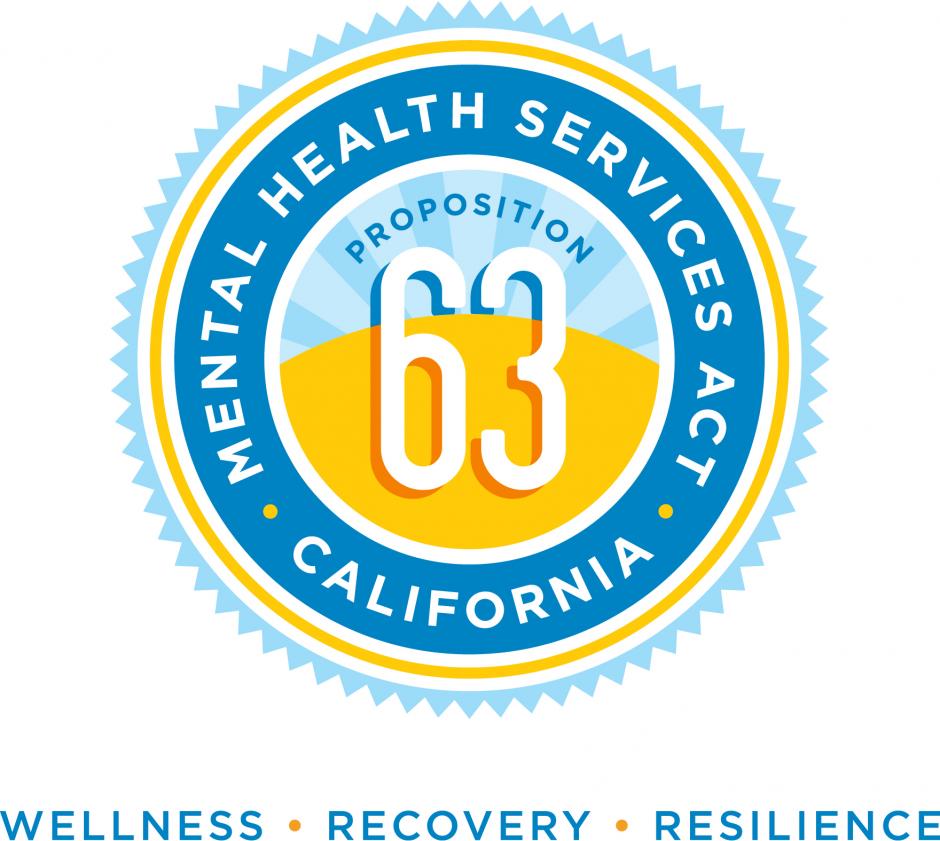MHSA Dollars Help Create Support Systems Around Clients
Full Service Partnerships
The Mental Health Services Act (MHSA), passed in 2004, has provided increased funding for mental health supports and services to counties across California. Here in San Mateo County, MHSA dollars are leveraged virtually everywhere in the BHRS system and community network of care.
While each county can exercise some discretion to use the funds to meet their unique needs, MHSA requires all money to first be allocated to specific components, each with its own set of guidelines. San Mateo County carefully balances state guidelines with community input to ensure we are making the most of our MHSA dollars.
Community Services and Supports
The largest component of MHSA is Community Services and Supports. Behavioral health advocates often pay special attention to this category, because it funds direct services for those with a serious mental illness. CSS aims to deliver integrated, culturally competent, client and family driven services, which meet the needs of the diverse unserved and underserved communities in counties across California.
CSS funds General System Development, Outreach and Engagement, and Full Service Partnerships (FSPs). At least 51 percent of CSS dollars must be allocated to Full Service Partnerships. San Mateo County currently devotes 54 percent or $11,630,495, of CSS funding to FSPs.
Full Service Partnerships
Full Service Partnerships provide intensive, community-based mental health services for clients with complex needs. This population includes adults with serious mental illnesses – and often a co-occurring substance use disorder – and youth with behavioral needs, who are experiencing and/or at risk of institutionalization, homelessness, incarceration, or psychiatric hospitalization.
A key tenant of the approach is doing “whatever it takes” to help clients on their path to recovery and wellness.
With a unique team-based approach, low staff-to-client ratio and 24/7 crisis availability, FSP programs foster a collaborative relationship between mental health staff and a client. Since 2006, BHRS has provided support to over 1,000 clients through Full Service Partnerships. In the past year alone, we’ve served 144 youth and 375 adults through partnerships delivered by four contracted providers. Caminar and Telecare serve adult clients, while Edgewood Center for Children and Families and Fred Finch Youth Center support youth and out-of-county youth, respectively.
Who do Full Service Partnerships Serve?
Referrals come from BHRS staff, community partners, school districts and providers, meaning clients typically enter an FSP after lower levels of care have proven unsuccessful. 50-year-old Telecare client Mike had been in and out of hospitals for decades before joining Telecare. With the support of a Full Service Partnership, he is now managing his mental illness and has even started a part time job.
While there are general criteria for FSP eligibility, each referral is evaluated individually to determine whether an FSP is an appropriate fit for the client. BHRS clinical services managers, who evaluate adult referrals, consider things like the level of care needed, history of incarceration or hospitalization, transition from a locked/secure facility and the strength of their current support system (or lack thereof).
Youth are typically referred to FSP services to help stabilize them in their home environment, and prevent entrance to (or transition back from) a higher level of care. The Interagency Placement Review Committee evaluates youth referrals in collaboration with BHRS managers, Children and Family Services and Juvenile Probation. They look for characteristics, like risk of entering or transitioning out of a residential program, and whether a child is living with a family who is willing to participate in and support their treatment. Transition age youth (TAY), aged 17 to 25, are evaluated by the Youth Transition Assessment Committee (YTAC). They determine whether a person’s symptoms of severe mental illness and/or history of trauma have significantly affected their day to day lives and placed strains on their support system.
A 15-year-old Edgewood client was referred to the program with a history of trauma, including being abandoned multiple times. After multiple failed treatment efforts, he was still struggling with his mental health issues, including anxiety and hallucinations. After engaging in a Full Service Partnership through Edgewood, he has learned how to express his needs and let his treatment team know when he is thinking of harming himself.
Not a one-size-fits-all model
 Each FSP treatment plan is
individualized and informed by a client’s personal needs and
goals. The client’s involvement in this process is crucial,
because everyone determines success in treatment differently. For
many, independence is a major goal. While some adult clients with
serious mental illness may require some level of ongoing
treatment, youth in FSPs often graduate out of the program,
meaning they no longer require intensive FSP services.
Each FSP treatment plan is
individualized and informed by a client’s personal needs and
goals. The client’s involvement in this process is crucial,
because everyone determines success in treatment differently. For
many, independence is a major goal. While some adult clients with
serious mental illness may require some level of ongoing
treatment, youth in FSPs often graduate out of the program,
meaning they no longer require intensive FSP services.
Full Service Partnerships follow a wraparound model of care - an intensive, holistic, strength-based and collaborative approach which places the client at the center of their care. A multidisciplinary care team creates a coordinated system of support for the client and their family, which addresses a range of life domains and ultimately helps the client meet their unique goals.
The wraparound approach places an emphasis on strengthening or cultivating a clients’ natural supports, such as their relationship with family and friends, so they can maintain wellness and utilize services in their own home or community.
FSP programs have also drawn from the Assertive Community Treatment (ACT) approach, where a team provides 24/7 multidisciplinary, flexible treatment and support through services located in the client’s community. Studies have shown ACT is more effective than traditional treatment for people experiencing mental illnesses and can reduce hospitalization by 20 percent, according to the National Alliance on Mental Illness.
Services
FSPs offer clients a comprehensive range of services and supports, including case management, 24/7 crisis prevention and intervention, access to health care services, peer and family services, co-occuring disorder education and engagement, vocational and academic development, housing support and more. Because services are unique to each individual consumer, not all clients require all services. Partnerships also support clients as their needs change over time and they require fewer, or less intensive, services.
FSP providers encourage clients to cultivate their natural supports. At Edgewood, they engage family members whenever possible. Telecare Administrator Kevin Jones stressed the importance of teaching clients to navigate the world around them and build meaningful relationships on their own.
Clients participate in support groups, which allow them to connect with other individuals who are experiencing similar issues and actively working on their wellness. Groups span a variety of topics such as life skills, health, harm reduction, co-occurring disorder education, anger management, art therapy, social skills and more.
Clifton, a Telecare client, says these support groups have helped him develop coping skills to manage his emotions on a day to day basis. Once a shy person who kept to himself, Clifton appreciates the way these groups have instilled in him a new, open attitude to talking to others and sharing his feelings.
“I found out I do like to talk,” said Clifton. “I do like to be a part of the conversation.” These days, he’ll even strike up casual conversations with strangers on the streets. He genuinely appreciates the human connection, and thanks to Telecare, he’s gained the skills to cultivate these connections in his everyday life.
Because they serve different populations, adult and youth FSP programs are faced with unique challenges and sometimes require slightly different approaches to care. For instance, youth FSP clients are more likely to have family members actively participating in and supporting their treatment. They are also more likely to live with those family members, as opposed to adult or transition age youth clients, who’s housing needs can be challenging to meet, even with the help of a Full Service Partnership.
“Finding and maintaining affordable housing is difficult, finding and maintaining that same housing in areas with accessible public transportation and negligible community violence has become nearly impossible,” stated a recent Edgewood report. ”Housing vouchers continue to be limited and landlords who accept them are even more so. Stress related to housing, finances, and safety all lead to strain on family systems, pressure on relationships, and prolonged recovery for those with a serious mental illness.”
With housing support services provided by FSPs, clients are able to find and maintain housing, allowing them to focus on their wellness.
In San Mateo County, of adult FSP clients with housing, only 31 percent experienced a mental health emergency in their first year of FSP. Of the adult clients who were homeless, incarcerated or in inpatient facilities, 69 percent experienced a mental health emergency in their first year of FSP.
Beyond providing a physical home to stay in, FSP providers may also offer on-site support services at certain locations. 48 year-old Sione lives in an apartment provided by Telecare. For years, he struggled with a co-occurring mental illness and substance use disorder, but he believes the stability of having his own home in a supported environment has helped him stay out of the hospital. Sione appreciates the freedom that comes with having a place to cook his own meals and relax on his own terms, and the support of Telecare staff checking in on him once a week. He’s also formed connections with other clients who live at the housing site and can relate to his experiences dealing with his mental illness.
FSP Outcomes
The table below shows the improvement of all FSP clients after their first year compared to the year prior to obtaining these services. For adults age 25-59 years, the number of arrests decreased by 87 percent, while the number or mental health emergencies decreased by 89 percent.
Percent Improvement in Outcomes by Age Group – year prior to FSP compared with first year in FSP
|
Self-Reported FSP Outcomes |
Children (16 years & younger) |
TAY (17 to 24 years old) |
Adult (25 to 59 years old) |
Older Adult (60 years & older) |
|
Homelessness |
22% |
7% |
28% |
|
|
Detention or Incarceration |
24% |
16% |
30% |
|
|
Arrests |
67% |
65% |
87% |
|
|
Employment |
|
|
26% |
|
|
School Suspensions |
47% |
72% |
|
|
|
Mental Health Emergencies |
89% |
67% |
57% |
42% |
|
Hospitalization |
56% |
24% |
48% |
54% |
|
Psychiatric Emergency Services |
64% |
41% |
67% |
7% |
The common thread that runs through the different types of FSP providers and programs, is the idea of a support system. Individuals who felt entirely alone before participating in FSP service, now have dedicated teams of people supporting, listening, caring and encouraging their recovery – whatever it takes.
